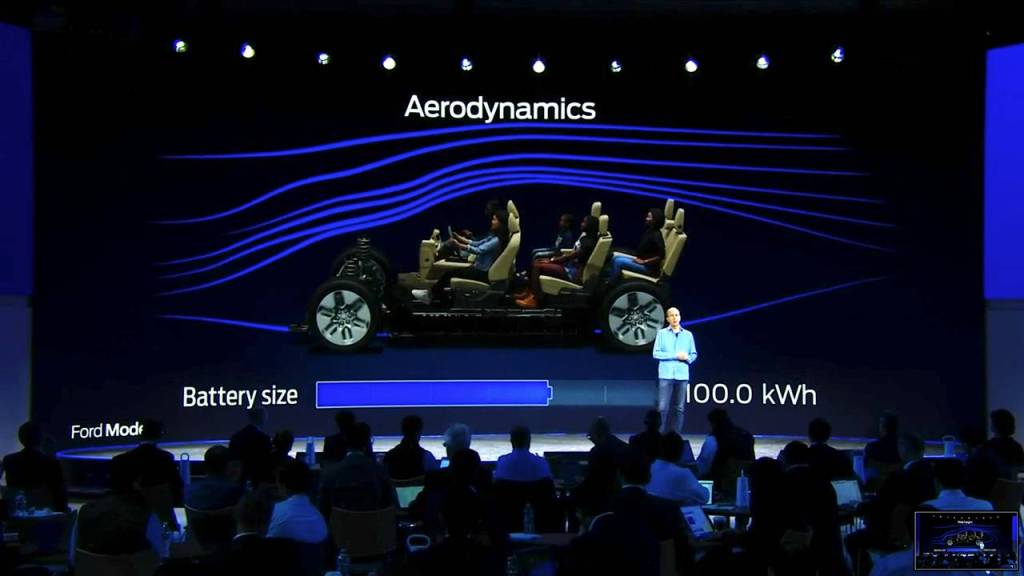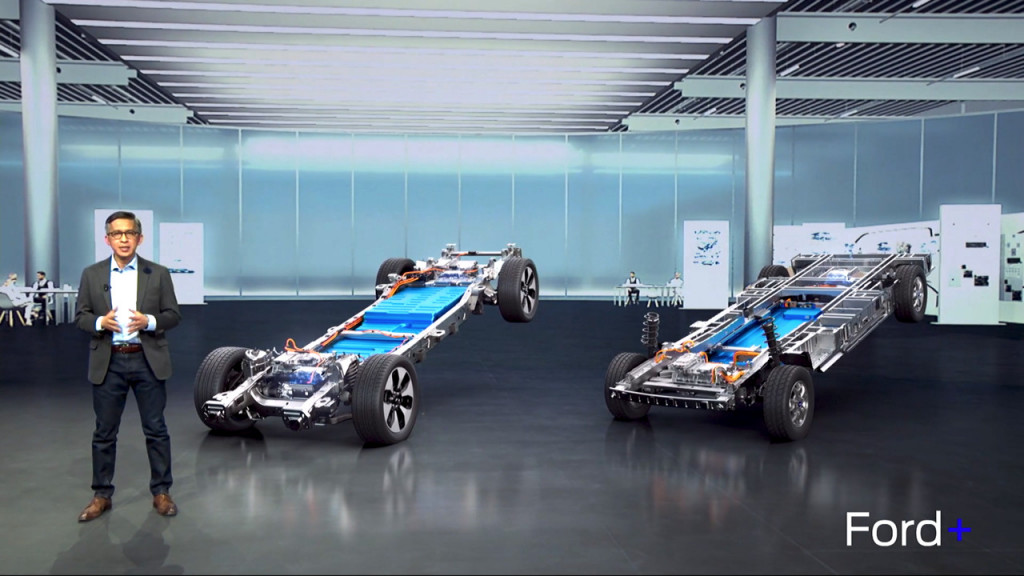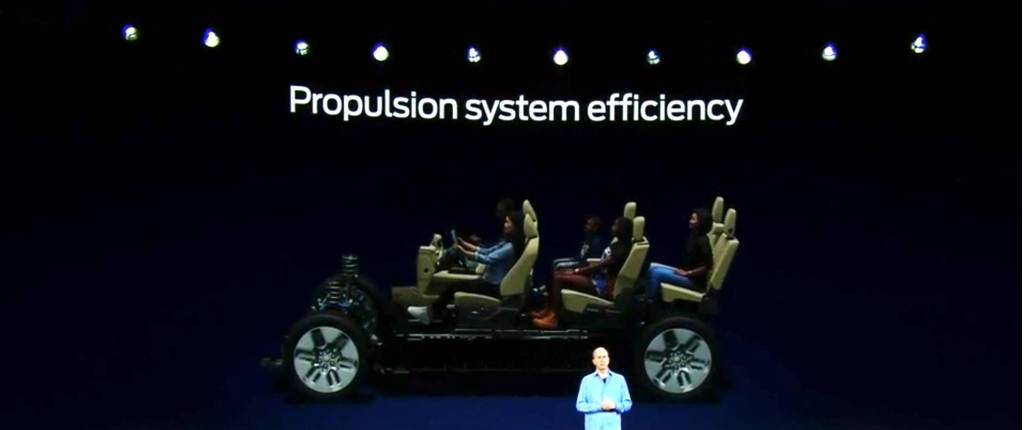Ford is taking batteries very seriously, and it’s not going to spend more on them than it needs to.
What that means, Ford product development chief and CTO Doug Field explained at the company’s Capital Markets Day earlier this week, is redesigning next-generation EVs around weight savings, reduced complexity, lower rolling resistance, the right ride height, and close attention to aerodynamics—not aping existing ICE products but creating entirely different products. And that will keep battery packs no larger than needed, and hopefully keep prices down.
2025 Ford 3-row SUV –
As it detailed earlier this week, that means there won’t be an Expedition Lightning, but instead a three-row electric SUV with 350 miles of range out of around a 100-kwh battery pack, coming in 2025.
Later, in a Q&A session with analysts, Ford CEO Jim Farley added some color to this new focus on optimizing around efficiency, and now going overboard on batteries.
“I have no idea what’s going on in this industry right now,” said Farley, clearly then seizing the opportunity for a jab at GM, which on the same day announced a fully electric Escalade IQ that might feasibly carry over the Hummer EV’s gigantic 205-kwh battery pack.

Ford Gen 2 electric SUV after efficiency improvements
Huge EV batteries won’t make money?
“All I hear is all these announcements of 450-mile range, a 500-mile range, there was another one today about a three-row crossover, it’s going to go electric,” he said. “These batteries are huge; if you have those kind of batteries you will not make money.”
“We’re not going to go to 600-mile range,” added Farley. “We’re trying to make the smallest possible battery for competitive range.”
“I don’t understand why everyone is so obsessed with battery size,” continued the CEO. “Right now, it’s like, what range can you get? But the next question is…what size battery do you need for a competitive range? The second is a better question than the first. So the size of the batteries in the second gen is really important on cost.”
The efficiency talk isn’t unheard of and, well, not fixating on range alone has been a core facet of Green Car Reports’ EV buying advice for years. Tesla has long held an efficiency advantage across most if not all of its models, and that’s helped compound its road-trip charging-accessibility advantages.
Lucid has from the start been saying that efficiency is far more important than range—although simultaneously it’s blown the competition away with its Air sedan, offering up to 516 miles on a 112-kwh battery pack and a range of up to an EPA-rated 425 miles from 92 kwh.

Ford EV platforms for mid-decade, presented by Hau Thai-Tang
Some still pushing for range and a super-size pack
That said, it’s good to get Ford on board with the idea, and automakers do seem fixated on a high range number, at the expense of a plus-sized battery pack. Chevrolet earlier this week confirmed that a version of the 2024 Chevy Silverado EV may get an estimated 450-mile range, while shying away from disclosing its battery size. And the 2025 Ram 1500 REV has a targeted range of 500 miles with a whopping 229-kwh pack.
So far there are no three-row electric SUVs that hit 350 miles of EPA range—not even the latest crop of models like the Mercedes EQS SUV (305 miles on 108 kwh) or upcoming Kia EV9 (300 miles on around 100 kwh).
The Tesla Model X gets close today, though, at an EPA-rated 348 miles from a pack of around 100 kwh. And the Rivian R1S will go an anticipated 340 miles with its 135-kwh Large Pack in the upcoming Dual-Motor version—with a 180-kwh Max Pack version coming soon and enabling an estimated 390 miles.

Ford future EVs – propulsion efficiency
“The efficiency obsession isn’t in the first year of the program,” said Field, after he’d noted that 350-mile range and super-fast charging was the starting point. “It goes on and on, finding every little change that you can get for aerodynamics, a mile here, a mile there, so we’re not going to stop.”
